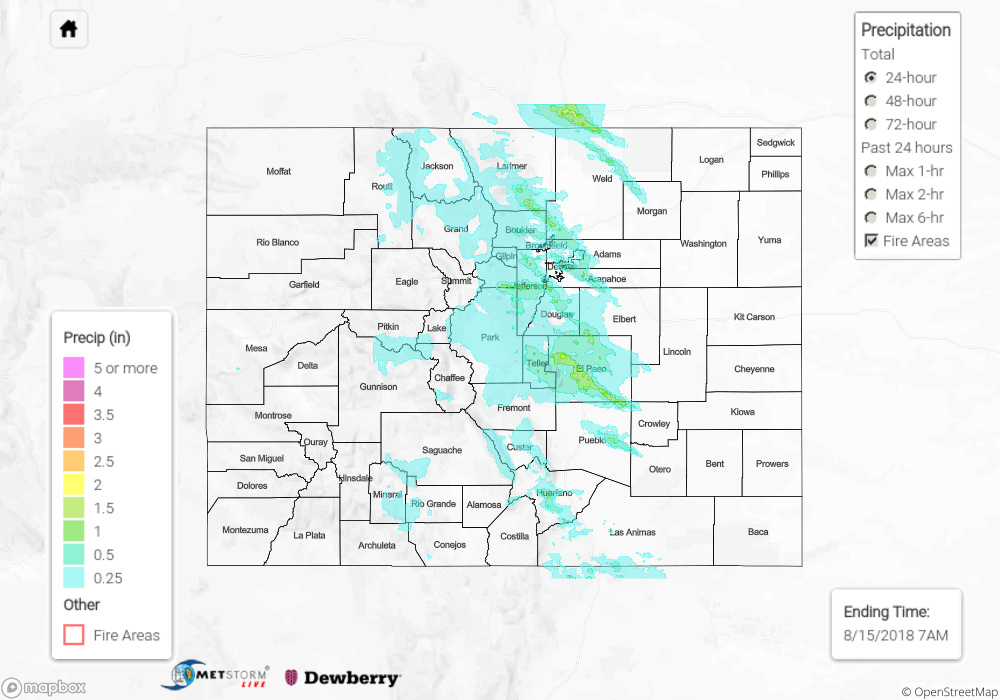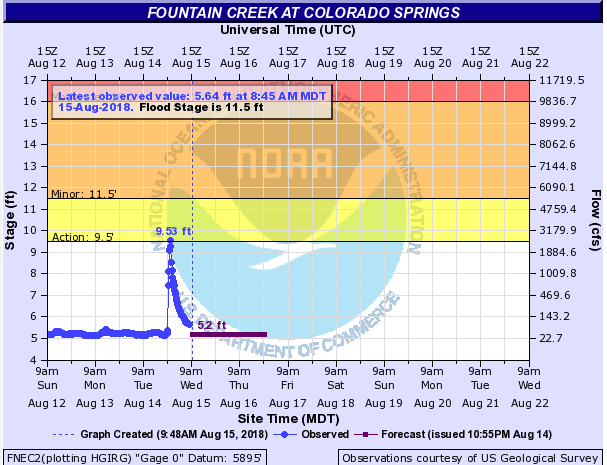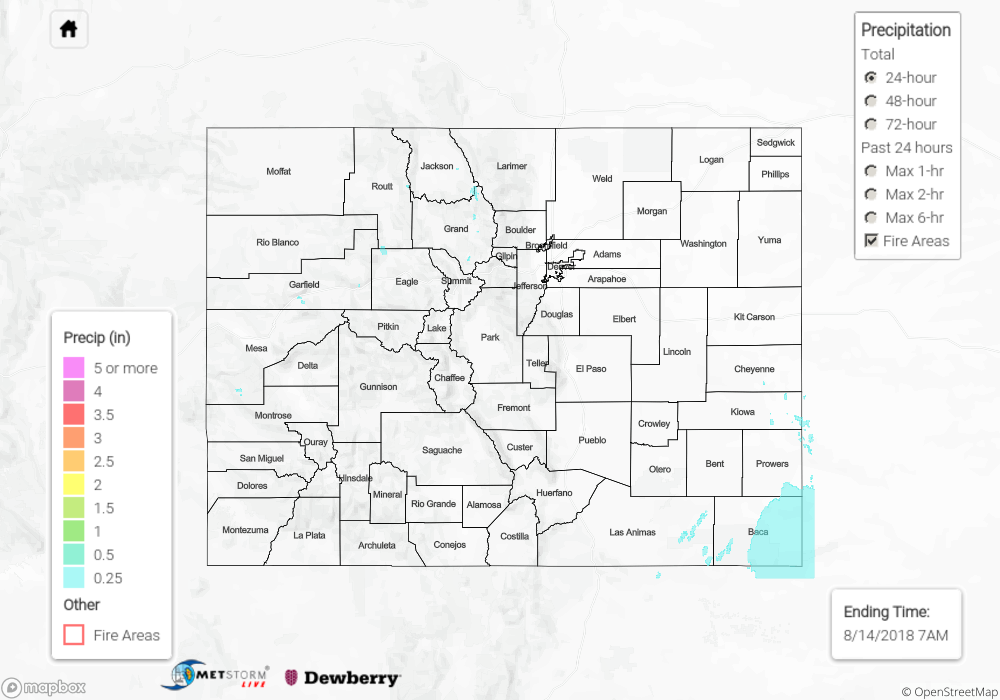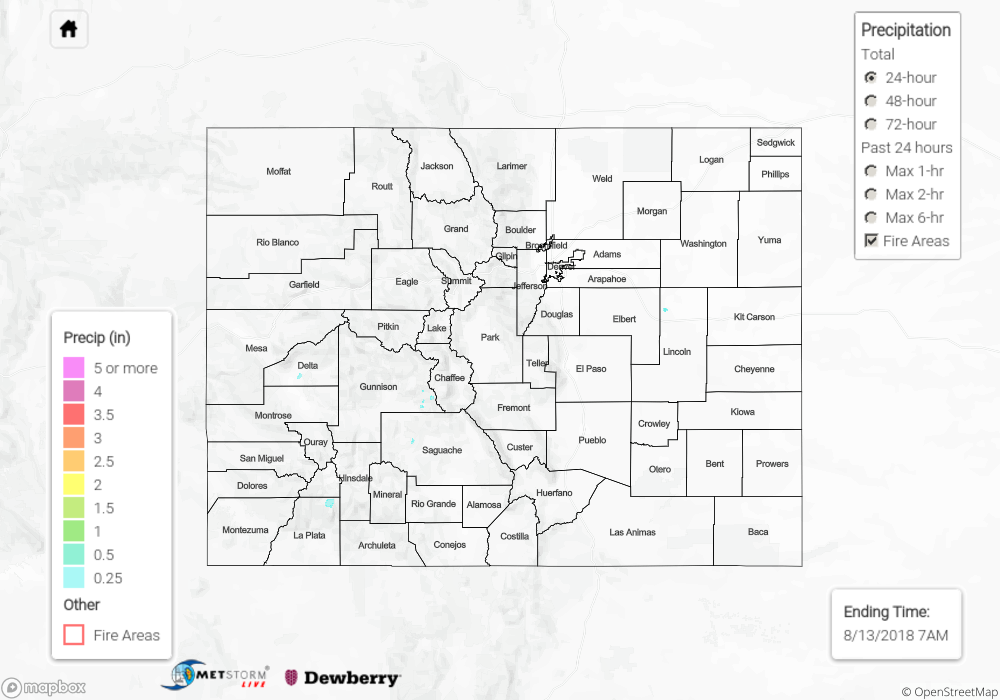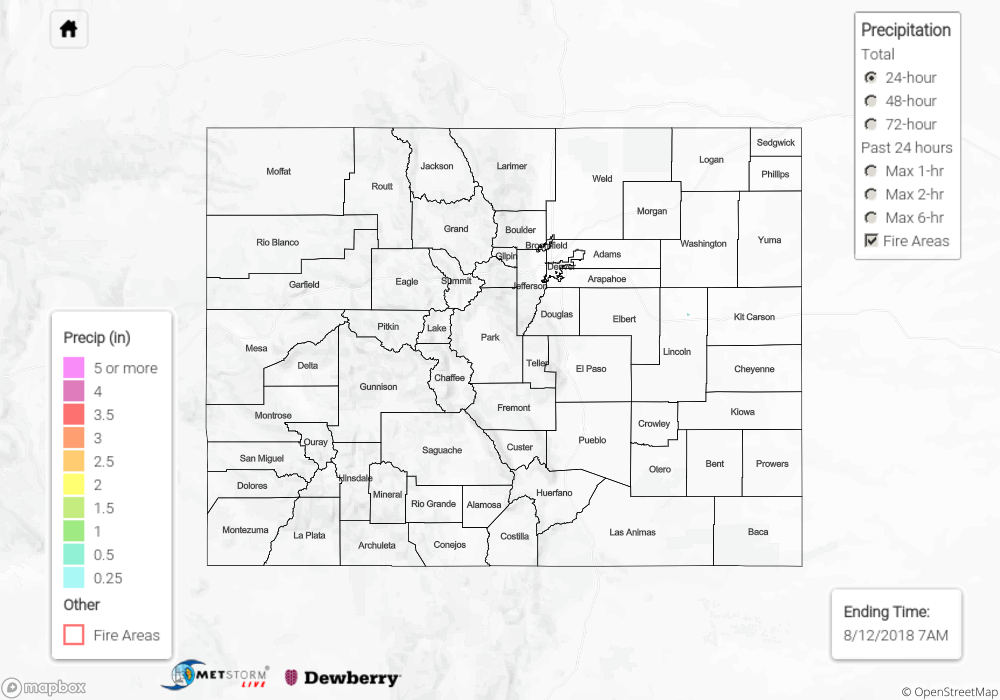Issue Date: Wednesday, August 15th, 2018
Issue Time: 10:00 AM MDT
Summary:
A shortwave trough passed over the eastern mountains at the same time as peak heating on Tuesday, which help create widespread thunderstorm development. Storm development was greatest over the Front Range, but better moisture was to the south. The low pressure that had been creating northeasterly flow aloft moved into Kansas, so south/southeast winds pulled low-level moisture back into eastern Colorado. Dew points yesterday afternoon were in the low 50Fs to the north and the high 50Fs to the south. This helped create some heavy rainfall in the afternoon and overnight hours along with strong winds and hail up to 1.5 inches in diameter during the afternoon. Most hail yesterday was in the pea size range, but drifts of 3-4 feet were reported on social media. This caused a lot of problems with drainage, so roads had a lot of flooding with the storms to the north. To the west, residual moisture under the ridge was reused for afternoon thunderstorms, but without much change to the low-level moisture, storm totals were similar to the last couple of days. A gust of 53 mph was measured as Pitkin County Airport.
Here are some of the heaviest rainfall reports from Tuesday (from North to South):
1.45 inches near Chatfield State Park and Buckley Air Force Base
0.95 inches 3 miles east of Monument
1.34 inches at the Air Force Academy
1.51 inches near Security-Widefield
1.64 inches at Peterson AFB
Fountain Creek at Colorado Springs reached the Action stage with a height of 9.53 inches. That’s a 4.5 foot rise in the span of an hour or two, which is always impressive. A slow moving thunderstorm produced flash flooding near La Veta Pass. Flooding was reported at County Road 442 at south Abeyta Creek. There was also flooding reported over County Road 520 at Dog Springs Arroyo. Radar estimates were just over 1 inch in this area.
To see how much precipitation fell over your area, scroll down to the State Precipitation Map below.
Click Here For Map Overview
